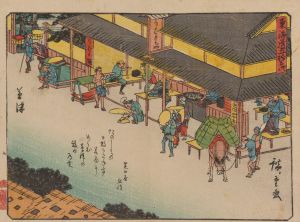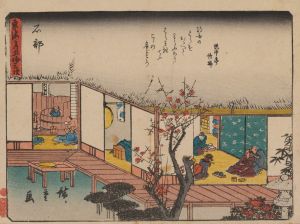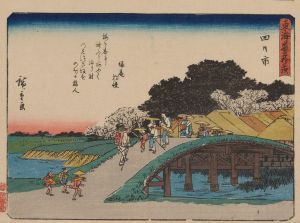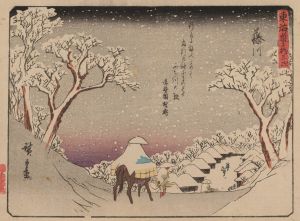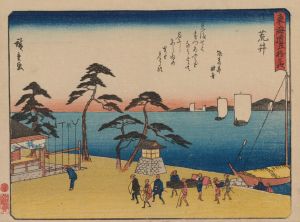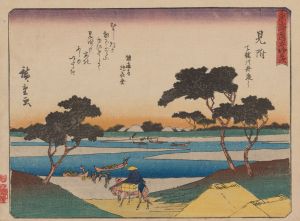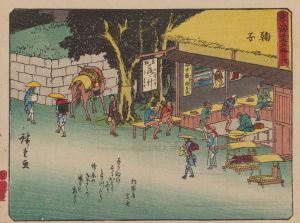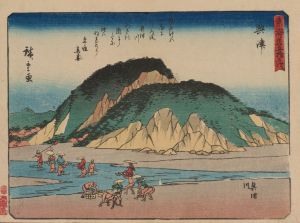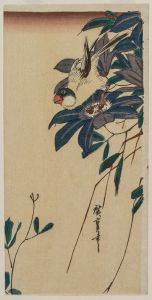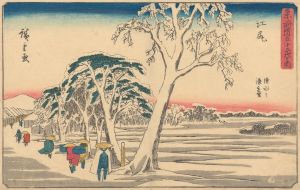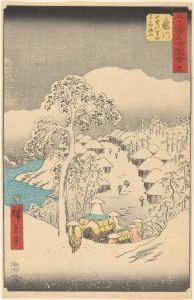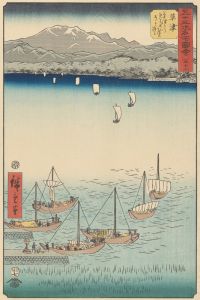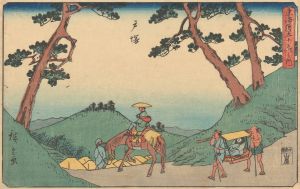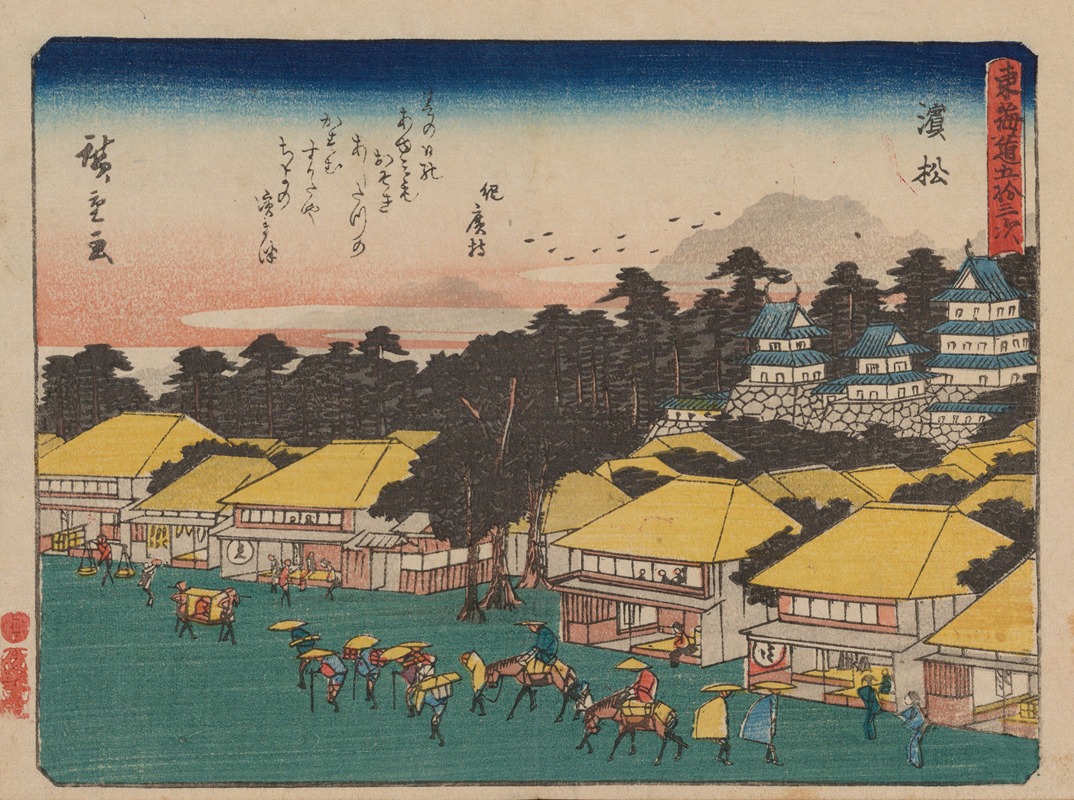
Tokaido gojusantsugi, Pl.30
A hand-painted replica of Andō Hiroshige’s masterpiece Tokaido gojusantsugi, Pl.30, meticulously crafted by professional artists to capture the true essence of the original. Each piece is created with museum-quality canvas and rare mineral pigments, carefully painted by experienced artists with delicate brushstrokes and rich, layered colors to perfectly recreate the texture of the original artwork. Unlike machine-printed reproductions, this hand-painted version brings the painting to life, infused with the artist’s emotions and skill in every stroke. Whether for personal collection or home decoration, it instantly elevates the artistic atmosphere of any space.
Andō Hiroshige, a renowned Japanese ukiyo-e artist of the Edo period, is celebrated for his landscape prints and his series "The Fifty-three Stations of the Tōkaidō" (Tōkaidō Gojūsan-tsugi). This series, created in the early 1830s, is among Hiroshige's most famous works and captures the scenic beauty and cultural significance of the Tōkaidō road, which was the main route connecting Edo (modern-day Tokyo) to Kyoto. Each print in the series depicts one of the 53 post stations along the route, as well as the starting point at Nihonbashi and the terminus at Kyoto, making a total of 55 prints.
Plate 30 of this series is one of these iconic prints, though specific details about the scene depicted in Plate 30 are not universally agreed upon due to variations in editions and the lack of a standardized numbering system across different printings. However, each print typically features a unique landscape or cultural scene that reflects the local geography, climate, and daily life of the area it represents. Hiroshige's work is characterized by its use of vibrant colors, attention to detail, and ability to convey the atmosphere and mood of each location.
Hiroshige's Tōkaidō series was revolutionary in its time for its focus on landscapes rather than the more common subjects of kabuki actors and courtesans. The series was produced using woodblock printing, a popular method in Japan that allowed for the mass production of artworks. This technique involved carving an image into a wooden block, applying ink, and then pressing it onto paper. Multiple blocks were used for different colors, allowing for the rich and varied palettes seen in Hiroshige's prints.
The Tōkaidō road itself was an essential part of Japanese culture and commerce during the Edo period. It was used by travelers of all kinds, including samurai, merchants, and pilgrims. The road was lined with inns and teahouses, providing services to those making the journey between the two major cities. Hiroshige's prints not only capture the physical landscapes but also offer a glimpse into the lives of the people who traveled the road.
Hiroshige's work had a significant influence on Western art, particularly on the Impressionist and Post-Impressionist movements. Artists such as Vincent van Gogh and Claude Monet admired and were inspired by the composition, perspective, and use of color in Hiroshige's prints. This cross-cultural impact highlights the universal appeal and enduring legacy of Hiroshige's art.
In summary, Andō Hiroshige's "The Fifty-three Stations of the Tōkaidō" series, including Plate 30, is a masterful representation of the landscapes and culture of Edo-period Japan. Through his innovative use of woodblock printing and focus on natural and human elements, Hiroshige created works that continue to be celebrated for their beauty and historical significance.





